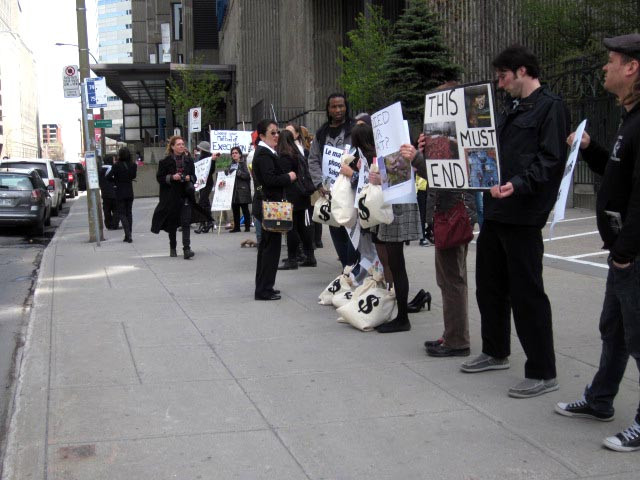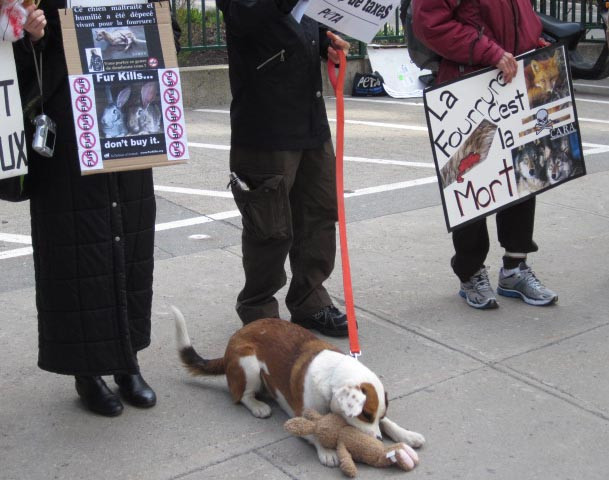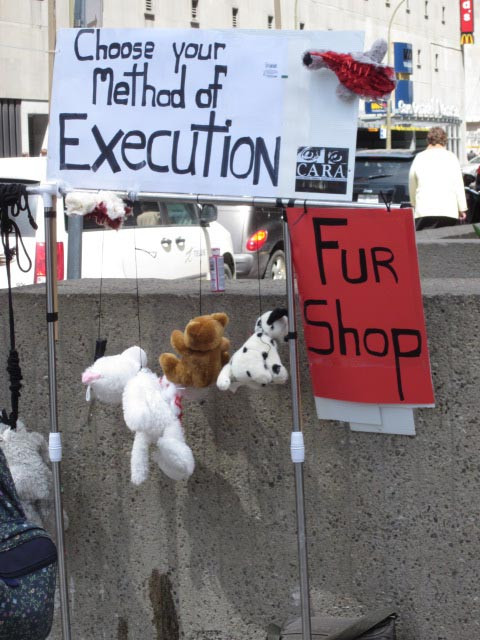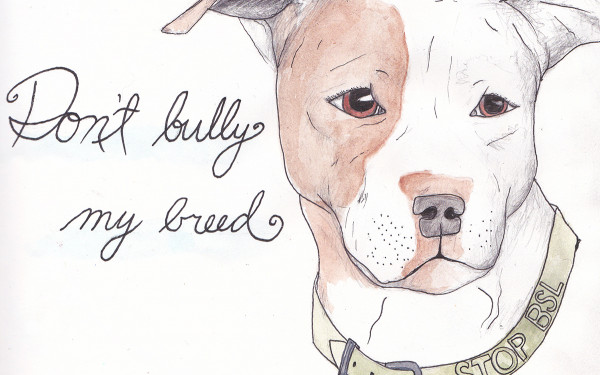Fuming Over Furs
Animal Rights Groups Unite Against Annual Fur Fair
With police surveying at a distance, a group of about two dozen animal rights activists protested the return of the North American Fur & Fashion Expedition-Montreal, an annual fur show that took place April 30 at Place Bonaventure.
“We want to raise the status of animals from objects to sentient beings,” said Marion Zimtgeschmack, honorary president of the Concordia Animal Rights Association, which organized the event along with the People for the Ethical Treatment of Animals.
Zimtgeschmack said that every year CARA organizes a demonstration in response to the fur show, which in the business of pushing what she calls “pseudo-products, because no one wants them.”
For three hours in the chilly April afternoon protesters held signs denouncing the fur trade and fashion fair. Zimtgeschmack paced in front of the group with a megaphone, telling anyone within earshot about the shame of the fur industry.
The focus of the event was the death knell of the seal trade, an industry on the brink of complete insolvency after Russia joined the European Union’s ban on seal products. Although Canada has subsidised the seal hunt in recent years, since these bans the industry has bottomed out.
PETA have lead the successful campaign against what they call “the Canadian Seal Slaughter” based on assertions that every year hundreds of thousands of baby harp seals are brutally killed during the hunt.
“The Chinese fur trade is extremely aggressive and they know that we don’t want to wear cats and dogs. It’s a really ugly business between China and Canada–that they even let these things come in, in tiny little toys, in boots–it’s not labeled.”
“During the slaughter, baby seals are shot or repeatedly clubbed,” PETA’s website states. “Sealers bludgeon the animals with clubs and “hakapiks” (metal-hook–tipped clubs) and drag the seals—who are often still conscious—across the ice floes with boat hooks.”
This is in stark contrast with statements issued by the Canadian government. Killing whitecoats, or baby seals, has been illegal in Canada since 1987. But animal rights activists do not believe the government is being transparent about the hunt.
“We have been trying to do research to find accurate information on the seal slaughter,” Zimtgeschmack said. “It’s very hidden away.”
In an attempt to save the commercial hunt and Inuit hunt, the Canadian government and the Inuit have each challenged the bans on seal products.
“The Inuit’s way with the land, and their seal hunting, it’s so ancient and necessary,” said Morning Star, a Cree elder who speaks on Aboriginal issues for Concordia.
She added that Aboriginal traditions have always been seen as barbaric by a Eurocentric world, but that today’s disdain for native practises is done “in a more sugar-coated way.”
“I am not taking a position on indigenous seal hunting,” Zimtgeschmack said. “But I have the information that indigenous people do not get anything out of the trade.”
So far appeals to lift the bans have been rejected.
The seal trade is however much smaller than the factory fur farming industry which was also being protested. According to PETA, 85 per cent of the fur industry’s skins come from factory farms.
Zimtgeschmack said that a lot of Canadians wear fur without knowing it and that this is no accident. The larger issue of factory fur farms is not met with the same tone of inevitable victory that the seal trade evokes today.
“The Chinese fur trade is extremely aggressive and they know that we don’t want to wear cats and dogs. It’s a really ugly business between China and Canada–that they even let these things come in, in tiny little toys, in boots–it’s not labeled.
“Many [Canadians] think, ‘That can’t be real fur–it’s so cheap!’ But animal fur is worth nothing, it’s not labeled and people have no idea what they’re buying.”
Although the battle against factory farming may be only starting to gain momentum, with the Russian seal-product ban in place Zimtgeschmack asserted, “the seal trade will die very soon.”




_600_832_s.png)

web_600_375_90_s_c1.JPG)
_600_375_90_s_c1.jpg)

